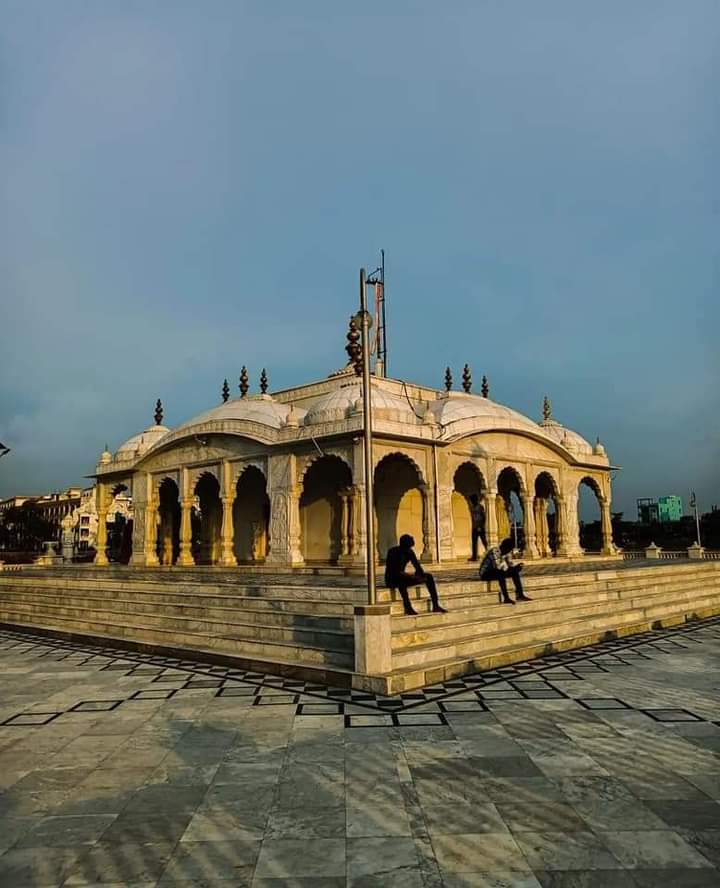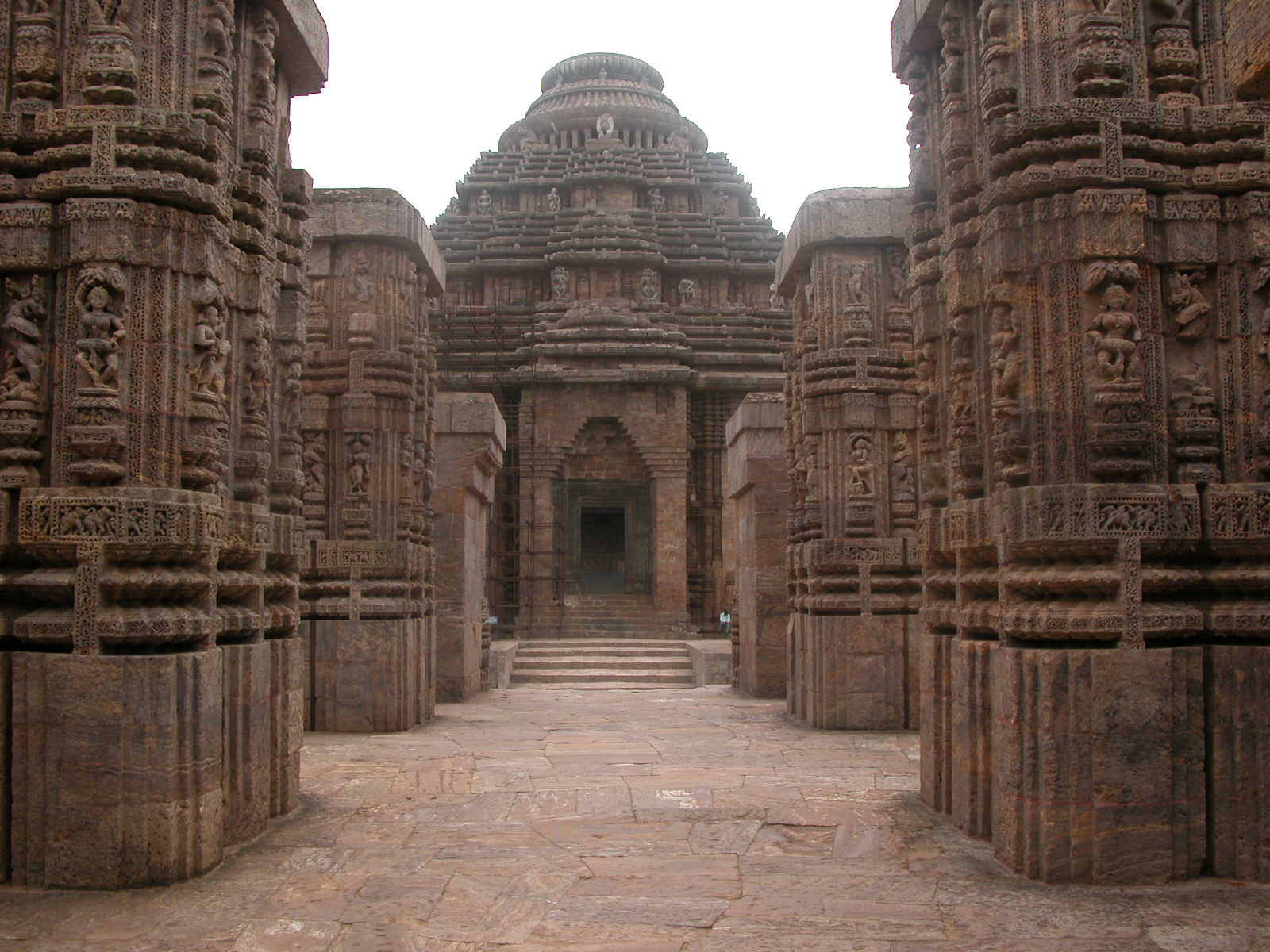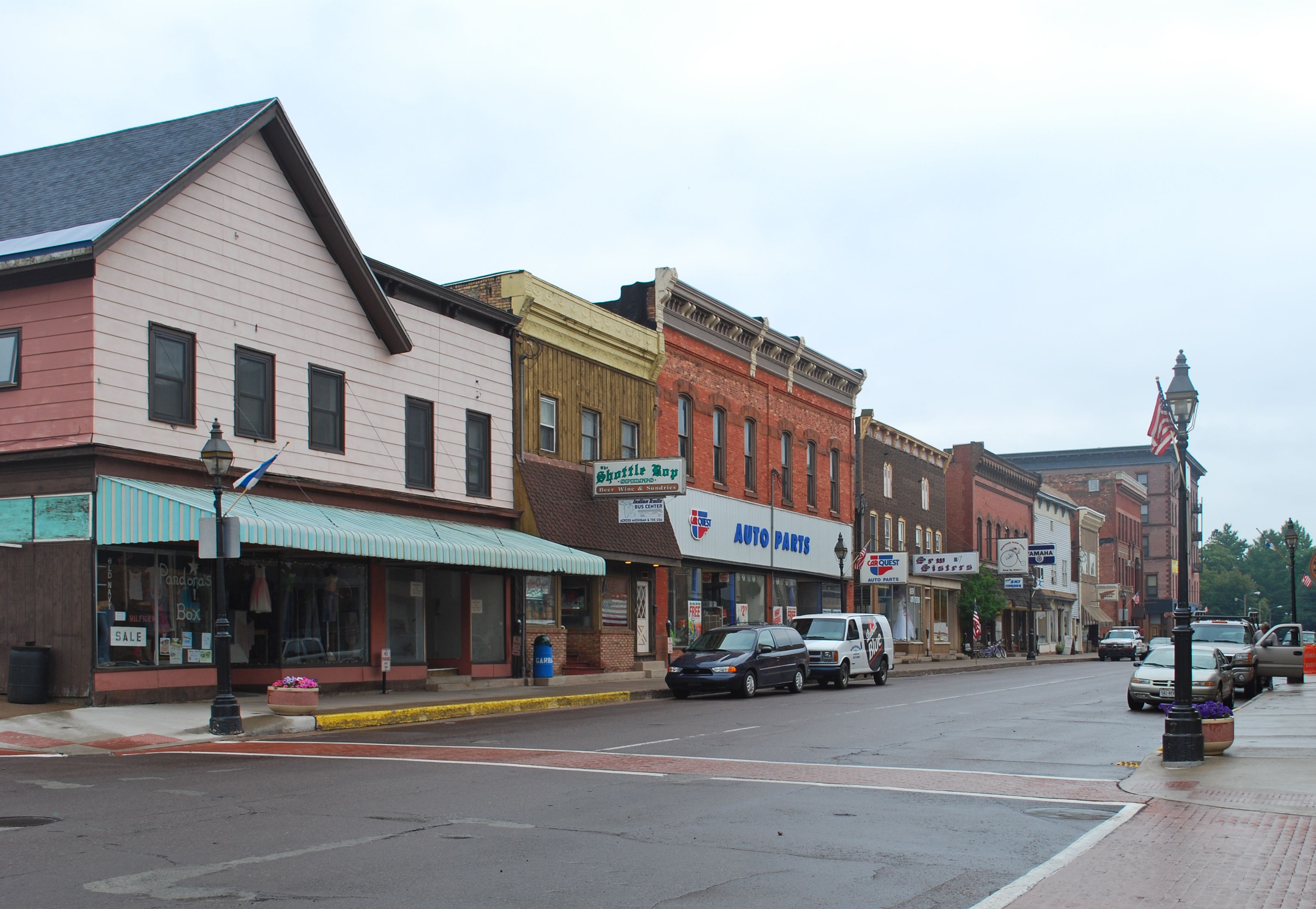|
Pawapuri
Pawapuri, or Pavapuri (also called Apapapuri, meaning "the sinless town"), is a holy site for Jainism, Jains located in the Nalanda district of Bihar state in East India, eastern India. It is located about 19 kilometres from Rajgir and 101 kilometres from Patna, the capital of Bihar. Pawapuri is Mahavira's ''nirvana'' and a pilgrimage site for Jains. Tourism Pawapuri in Nalanda district ranks second after Rajgir in Nalanda in terms of tourism. Among the main tourist attractions, the Jal Mandir here is world-famous. It is believed that Lord Mahavira (the 24th 24th Tirthankara, Tirthankara of Jainism) was cremated at this place after attaining Mahanirvana. Most of the tourists come to Pawapuri in thousands to see the beauty of the water temple. Spread over an area of 84 bighas, the beauty of the pond of this Jal Mandir has a different importance. In the summer, lotus flowers enhance the beauty of this pond, due to which this pond is also known as Kamal Sarovar. And during ... [...More Info...] [...Related Items...] OR: [Wikipedia] [Google] [Baidu] |
Jal Mandir
The Jal Mandir or Water Temple is situated in Pawapuri (also known as Apapapuri which means a town without sins), in the Indian state of Bihar. It is dedicated to Mahavira, the 24th Tirthankara (religious preacher of Jainism), which marks the place of his cremation. Mahavira attained Moksha (Jainism), Nirvana (death) in Pawapuri in 527 BC. The temple was originally built by King Nandivardhana of Kundagrama, Nandivardhan, elder brother of Mahavira, within the pond which is filled with red coloured lotus flowers. It is one of the five main temples in Pawpuri, where the "''Charan Paduka''" or foot impression of Mahavira is deified. Location The temple, a famous and sacred pilgrimage centre of Jainism, is located in the holy city of Pawapuri in the Nalanda district in the Ganga Basin. It is away from Patna, the capital city of Bihar which is the nearest airport. Rajgir the nearest convenient railway station is away, and from Biharsharif city in the subdivision of the same name. It ... [...More Info...] [...Related Items...] OR: [Wikipedia] [Google] [Baidu] |
24th Tirthankara
Mahavira (Devanagari: महावीर, ), also known as Vardhamana (Devanagari: वर्धमान, ), was the 24th ''Tirthankara'' (Supreme Preacher and Ford Maker) of Jainism. Although the dates and most historical details of his life are uncertain and varies by sect, historians generally consider that he lived during the 6th or 5th century BCE, reviving and reforming a proto-Jain community (which had possibly been founded by Pārśvanātha), and that he was an older contemporary of Gautama Buddha. Jains regard him as the spiritual successor of the 23rd ''Tirthankara'' Parshvanatha. According to traditional legends and hagiographies, Mahavira was born in the early 6th century BCE to a royal Kshatriya Jain family of ancient India. His mother's name was Trishala and his father's name was Siddhartha. According to the second chapter of the Śvētāmbara Ācārāṅga Sūtra, Siddhartha and his family were devotees of Parshvanatha. Mahavira abandoned all worldly posse ... [...More Info...] [...Related Items...] OR: [Wikipedia] [Google] [Baidu] |
Rajgir
Rajgir, old name Rajagriha, meaning "The City of Kings," is an ancient city and university town in the Nalanda district of Bihar, India. It was the capital of the Haryanka dynasty, the Pradyota dynasty, the Brihadratha dynasty, the Mauryan Empire, and it was the retreat center for the Buddha and his sangha. Other historical figures such as Mahavira and king Bimbisara lived there, and due to its religious significance, the city holds a place of prominence in Hindu, Buddhist and Jain scriptures. Rajgir was the first capital of the ancient kingdom of Magadha, a state that would eventually evolve into the Mauryan Empire. It finds mention in India's renowned literary epic, the Mahabharata, through its king Jarasandha. The town's date of origin is unknown, although ceramics dating to about 1000 BC have been found in the city. The 2,500-year-old cyclopean wall is also located in the region. The ancient Nalanda university was located in the vicinity of Rajgir, and the c ... [...More Info...] [...Related Items...] OR: [Wikipedia] [Google] [Baidu] |
Nalanda District
Nalanda district is one of the thirty-eight Districts of Bihar, districts of the state of Bihar in India. Bihar Sharif is the administrative headquarters of this district. The districts is home to the ancient Nalanda Mahavihara a UNESCO World Heritage Site. Nalanda is located in the Magadh region of southern Bihar. In Jainism * The 24th Jainism, Jaina Tirthankara Mahavira, ''Mahāvīra'' is said to have spent 'many Chaturmasya, ''Cāturmāsyas'' (rainy seasons)' at ''Nālandā''. Canonical scriptures of the ''Śvetāmbara'' sect also mention that ''Nālandā'' was known by other names such as ''Nālandāpada'' and ''Nālandā Sanniveśa''. The texts further highlight that it was a suburb of ''Rajgir, Rājagṛha''. ''Mahāvīra'' is said to have had met ''Makkhali Gosala, Makkhali-gosāla'', the leader of the Ājīvika, ''Ājīvakas'', for the first time at ''Nālandā''. * Jaina tradition records that some of ''Mahāvīra's Ganadhara, Gaṇadharas'' (disciples), namely ''Gautama ... [...More Info...] [...Related Items...] OR: [Wikipedia] [Google] [Baidu] |
Jainism
Jainism ( ), also known as Jain Dharma, is an Indian religions, Indian religion whose three main pillars are nonviolence (), asceticism (), and a rejection of all simplistic and one-sided views of truth and reality (). Jainism traces its spiritual ideas and history through the succession of twenty-four , supreme preachers of ''dharma''. The first in the current time cycle is Rishabhadeva, who tradition holds lived millions of years ago; the 23rd is Parshvanatha, traditionally dated to the 9th century Common Era, BCE; and the 24th is Mahāvīra, Mahavira, who lived . Jainism is considered an eternal ''dharma'' with the guiding every time cycle of the Jain cosmology, cosmology. Central to understanding Jain philosophy is the concept of ''bhedavijñāna'', or the clear distinction in the nature of the soul and non-soul entities. This principle underscores the innate purity and potential for liberation within every Jīva (Jainism), soul, distinct from the physical and menta ... [...More Info...] [...Related Items...] OR: [Wikipedia] [Google] [Baidu] |
Bihar
Bihar ( ) is a states and union territories of India, state in Eastern India. It is the list of states and union territories of India by population, second largest state by population, the List of states and union territories of India by area, 12th largest by area, and the List of Indian states and union territories by GDP, 14th largest by GDP in 2024. Bihar borders Uttar Pradesh to its west, Nepal to the north, the northern part of West Bengal to the east, and Jharkhand to the south. Bihar is split by the river Ganges, which flows from west to east. On 15 November 2000, a large chunk of southern Bihar was ceded to form the new state of Jharkhand. Around 11.27% of Bihar's population live in urban areas as per a 2020 report. Additionally, almost 58% of Bihari people, Biharis are below the age of 25, giving Bihar the highest proportion of young people of any Indian state. The official language is Hindi, which shares official status alongside that of Urdu. The main native languag ... [...More Info...] [...Related Items...] OR: [Wikipedia] [Google] [Baidu] |
Patna
Patna (; , ISO 15919, ISO: ''Paṭanā''), historically known as Pataliputra, Pāṭaliputra, is the List of state and union territory capitals in India, capital and largest city of the state of Bihar in India. According to the United Nations, as of 2018, Patna had a population of 2.35 million, making it the List of cities in India by population, 19th largest city in India. Covering and over 2.5 million people, its urban agglomeration is the List of million-plus urban agglomerations in India, 18th largest in India. Patna also serves as the seat of Patna High Court. The Buddhist, Hindu and Jain pilgrimage centres of Vaishali district, Vaishali, Rajgir, Nalanda, Bodh Gaya and Pawapuri are nearby and Patna City is a sacred city for Sikhs as the tenth 10th Sikh Guru, Sikh Guru, Guru Gobind Singh was born here. The modern city of Patna is mainly on the southern bank of the river Ganges. The city also straddles the rivers Son River, Son, Gandak and Punpun River, Punpun. The city ... [...More Info...] [...Related Items...] OR: [Wikipedia] [Google] [Baidu] |
East India
East India is a region consisting of the Indian states of Bihar, Jharkhand, Odisha and West Bengal and also the union territory of the Andaman and Nicobar Islands. The states of Bihar and West Bengal lie on the Indo-Gangetic plain. Jharkhand is situated on the Chota Nagpur Plateau. Odisha lies on the Eastern Ghats and the Deccan Plateau. West Bengal's capital Kolkata is the largest city of this region. The Kolkata Metropolitan Area is the country's third largest metropolitan region. The region is bounded by Bhutan, Nepal and the state of Sikkim in the north, the states of Uttar Pradesh and Chhattisgarh on the west, the state of Andhra Pradesh in the south and the country of Bangladesh in the east. It is also bounded by the Bay of Bengal in the south-east. It is connected to the Seven Sister States of Northeast India by the narrow Siliguri Corridor in the north east of West Bengal. East India has the fourth-largest gross domestic product of all Indian regions. The regio ... [...More Info...] [...Related Items...] OR: [Wikipedia] [Google] [Baidu] |
Nirvana
Nirvana, in the Indian religions (Jainism, Hinduism, Buddhism, and Sikhism), is the concept of an individual's passions being extinguished as the ultimate state of salvation, release, or liberation from suffering ('' duḥkha'') and from the cycle of birth and rebirth ('' saṃsāra''). In Indian religions, nirvana is synonymous with ''moksha'' and ''mukti''. All Indian religions assert it to be a state of perfect quietude, freedom, and highest happiness; liberation from attachment and worldly suffering; and the ending of ''samsara'', the cycle of existence.Gavin Flood, ''Nirvana''. In: John Bowker (ed.), '' Oxford Dictionary of World Religions'' However, non-Buddhist and Buddhist traditions describe these terms for liberation differently. In Hindu philosophy, it is the union of or the realization of the identity of Atman with Brahman, depending on the Hindu tradition. In Jainism, nirvana is also the soteriological goal, representing the release of a soul from karmic bondage ... [...More Info...] [...Related Items...] OR: [Wikipedia] [Google] [Baidu] |
Town
A town is a type of a human settlement, generally larger than a village but smaller than a city. The criteria for distinguishing a town vary globally, often depending on factors such as population size, economic character, administrative status, or historical significance. In some regions, towns are formally defined by legal charters or government designations, while in others, the term is used informally. Towns typically feature centralized services, infrastructure, and governance, such as municipal authorities, and serve as hubs for commerce, education, and cultural activities within their regions. The concept of a town varies culturally and legally. For example, in the United Kingdom, a town may historically derive its status from a market town designation or City status in the United Kingdom, royal charter, while in the United States, the term is often loosely applied to incorporated municipality, municipalities. In some countries, such as Australia and Canada, distinction ... [...More Info...] [...Related Items...] OR: [Wikipedia] [Google] [Baidu] |









